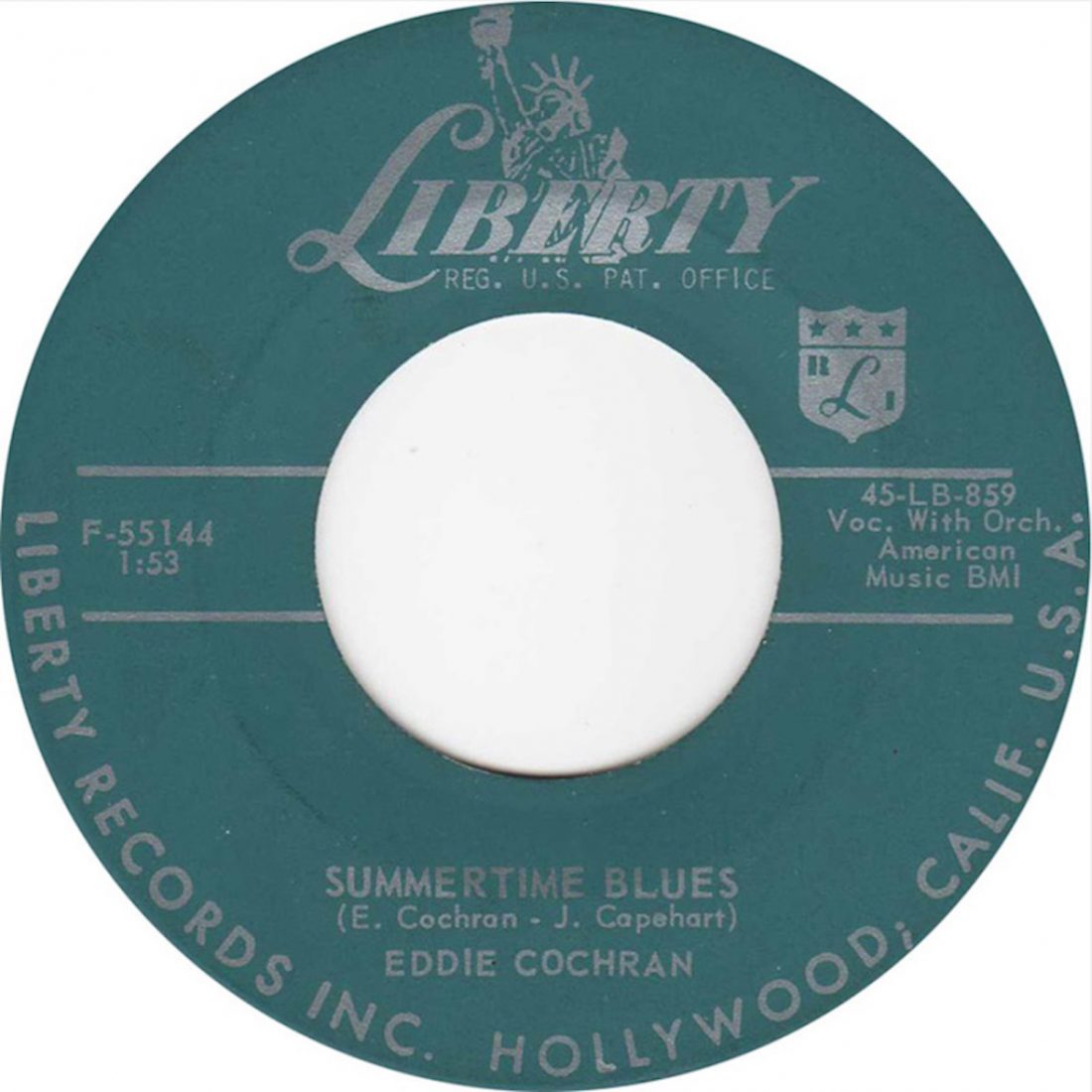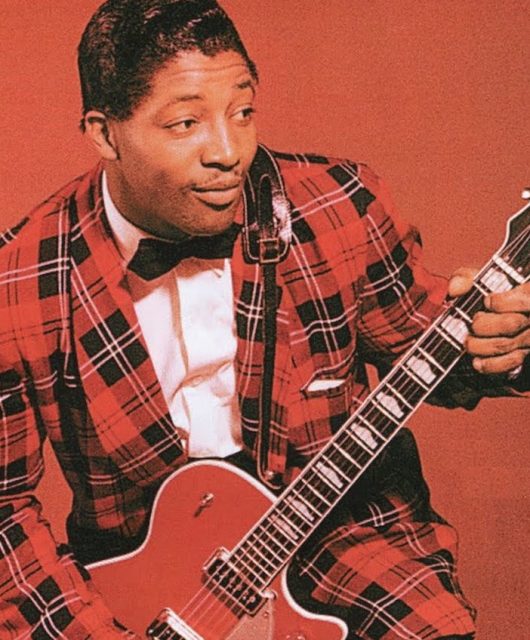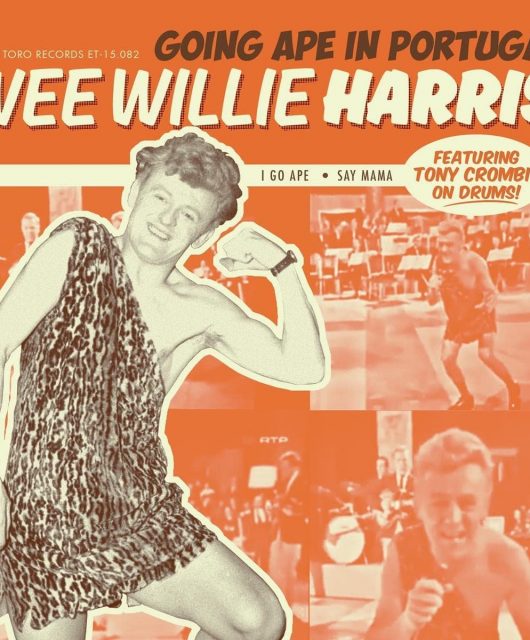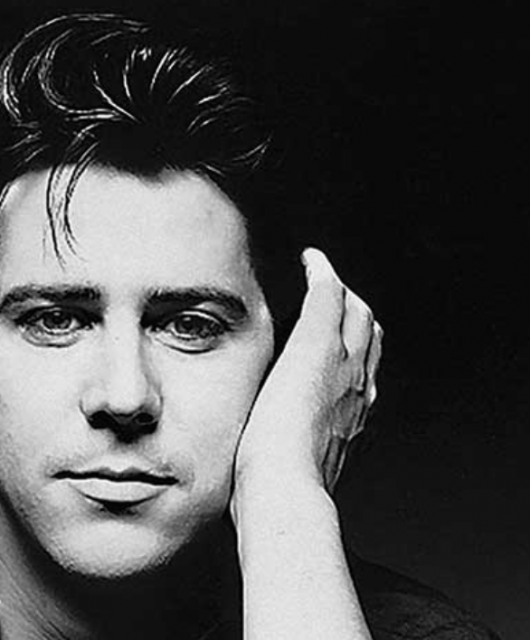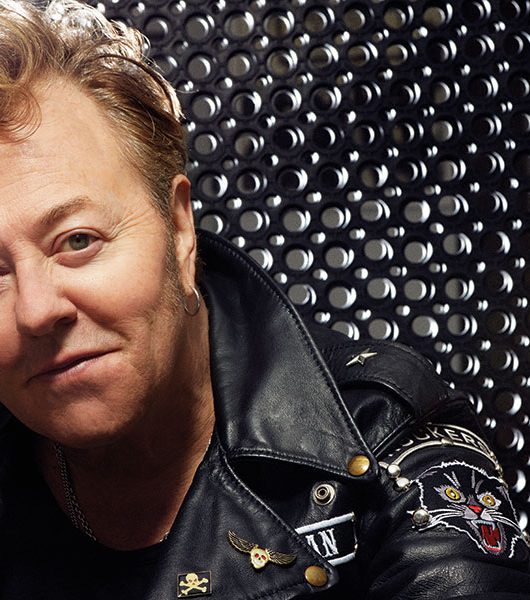We rewind the clock to tell the story behind Eddie Cochran’s Summertime Blues. The singer-songwriter’s first US Top 10 hit, written with manager Jerry Capehart about teenage frustration, elevated him to worldwide fame.
Despite his tragically brief life, Eddie Cochran has an impressively large number of tracks that could be considered his ‘signature song’. Perhaps it could be C’mon Everybody? Twenty Flight Rock? Or is it Somethin’ Else? Three Steps To Heaven was Cochran’s first and only No.1, so it could be that one, or maybe it’s the banging Teenage Heaven? However, a look on Spotify at the list of the most played Cochran numbers suggest that it’s Summertime Blues, taking the top spot with –at the time of writing –more than 100 million listens. Pretty impressive for a song that wasn’t even intended to be an A-side when it was waxed on 28 March 1958.
So why has it endured? It’s possible that the frustrations expressed in this story of a teen butting heads with his boss because he won’t allow him to enjoy the summer weather with his new girlfriend, is direct and universal. How many of us have been stuck indoors on a July afternoon, looking wistfully out of the window at a cloudless sky and watching heat shimmer atop the burning hot road?
“Sometimes I wonder what I’m gonna do,” sings Eddie, all of 19 when he recorded this, “’Cause there ain’t no cure for the summertime blues.”
There Real Eddie
At the time Cochran sat down with his manager Jerry Capehart to pen what would become Summertime Blues, he’d only had one modest hit in the shape of Sittin’ In The Balcony (US No.18). Listening to it now, given what came after, it feels inauthentic, a passable Elvis pastiche (even Cochran’s hiccuping vocal sounds like an impression) that wasn’t even a Cochran original (John D Loudermilk, as Johnny Dee, had cut it first). Summertime Blues, then, was designed to showcase the real Eddie Cochran. “We were looking for a hit that would give Eddie some identity,” Capehart recalled to David McGee.
The writing took place at Capehart’s apartment, with Eddie and bass player Connie ‘Guybo’ Smith present. It was Jerry who hit upon the idea of a song specifically about summer. Cochran had the riff ready and, just 45 minutes later, Summertime Blues was written. “There had been alot of songs about summer,” Capehart told Rolling Stone, “but none about the hardships of summer.”
Capehart paid $350 for three hours at Hollywood’s Gold Star Studios with Cochran, Smith and a drummer, whose identity the manager claimed not to remember (some suggest it was Earl Palmer).
But as Capehart recalled to McGee, the stickman’s skills –whoever he was – were somewhat lacking. “He couldn’t hold tempo” Jerry recalled. “And Eddie was about to go nuts. We got the one take –the one you hear on the record –everything else we had to trash. Thirty, 35 takes.”
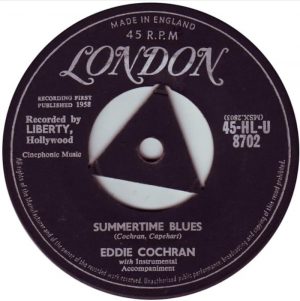
A Stroke Of Genius
It was during the recording that Cochran had a brainwave. He was particularly taken by the TV show Amos ’n’ Andy, and his favourite character was George ‘Kingfish’ Stevens, whose distinctive Georgia drawl Eddie was fond of impersonating.
The lines in the lyrics that come from the authority figures – “No dice, son, you gotta work late” / “Now you can’t use the car ’cause you didn’t work alick” etc –were originally intended to be delivered straight, but Eddie hit upon the idea to speak them in the style of Stevens. It was a stroke of genius, and those lines and that specific, almost comic delivery (all of which were recorded separately and spliced into the finished track) were often imitated at the time.
Before they’d entered Gold Star, it was planned that Summertime Blues would be the B-side of Love Again, written for the singer by his girlfriend Sharon Sheeley. But it soon became clear that Summertime Blues was the stronger song and so the sides were flipped.
On The Rock’n’Roll Map
Released on 21 July 1958, the single peaked at No.8 on the US Billboard chart, the singer’s biggest hit to date. It was the song that finally put Cochran on the rock’n’roll map, and in the years since, it’s been covered countless times by, among others, Johnny Chester, T. Rex, Brian Setzer, Johnny Hallyday, Rush and The Who (whose version on their Live At Leeds LP was released as a single, reaching No.38 in the UK and No.27 in the US).
But it was, of course, Cochran’s peerless original that was inducted into the Grammy Hall Of Fame and which is ranked No.73 in Rolling Stone’s 500 Greatest Songs of All Time list. And when it came to choosing the soundtracks for such films as Caddyshack, Summer Of Sam, La Bamba, American Hot Wax, This Boy’s Life and American Shaolin, it was Eddie’s original, not any inferior covers, that they went for.
Jerry Capehart would go on to co-write C’mon Everybody with Cochran, and also pen the song Turn Around, Look At Me, a minor hit for Glen Campbell in 1961 and a US No.7 for The Vogues in 1968. Even into his sixties, he was still pitching songs, and at the time of his death from cancer on 7 June 1998 was hawking a new track around Nashville. Its name? Summertime Blues No.2.
Vintage Rock Presents: Eddie Cochran Collector’s Edition click here
Read More: Top 20 Essential Eddie Cochran Tracks

